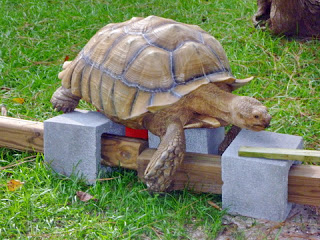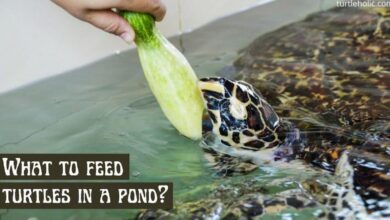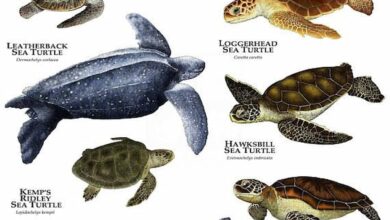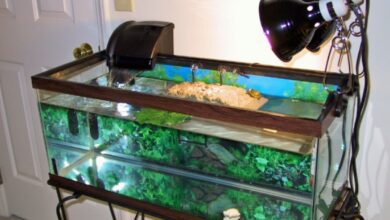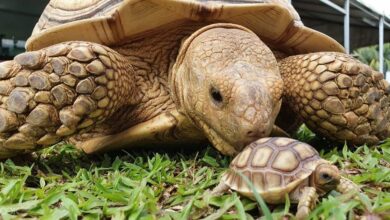UVB Light In Turtle Tanks
Ok, this one gets talked to death, but we still don’t have a consensus. So let’s discuss it here under its heading. Here is some factual information about the light spectrum.
Light is generally considered an electromagnetic wave.
Wavelength is measured in Nanometers (1/1000000000 meter)
IR is 700nm – 1500nm
Visible light is 400nm – 700nm
UVA is 320nm – 400nm
UVB is 286nm – 320nm
UVC is 200nm – 286nm
VUV is 100nm – 200nm (vacuum UV)
Window glass through at least 50 websites I reviewed tonight, ranging from hobbyist, manufacturers to collegiate physics presentations on the web all agree that there isn’t a significant amount of UVB light passed through. The problem with this statement is that the majority of sights just take this as common knowledge and move on. A few sites refer to the state of the energy. I will give a quick explanation
Light hits a “transparent” object, and if the energy level of the light matches it doesn’t pass through. Glass lets through the light that is above 350nm in general. This is to say that a lot of the light is absorbed or reflected, but what I can’t find is how much is absorbed and reflected.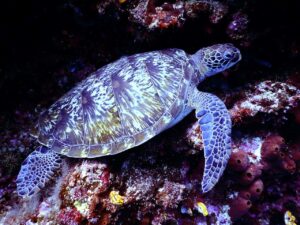
At this point, it requires a major study of the chemical makeup of glass and the intensity of the light and a bunch of heavy math that I am not capable of doing at this time.
What I have discovered through Melissa Kaplan’s fine site Anapsid.org is a couple of charts that give us a breakdown of natural sunlight and things it passes through
A single pane window should transmit about 5% UVB, modern double pained windows will allow about half that, if they’re tinted even less. If the light goes through a screen or a tank wall cut even more. So with a single pane window with access to direct sunlight for part of the day, you get the same output as a Reptisun 5.0 bulb at 12 inches away.
Now onto some theories…
Barb Reader has had Timmy the Cooter for nearly 43 years. He started as a dimestore turtle. For the majority of Timmy’s life, he has had just a window light. From Barb’s story, it took Timmy several years to reach adult size.
I have had Uzumaki the Cooter for 8 months. He has had a Reptisun 5.0 bulb on for 14 hours a day, and he usually sits about 5 inches away. My turtle started at 1.75 inches and is now 4.5 inches. At his current rate of growth, he will be a full-grown adult this time next year.
My theory is that turtles grow a lot faster when subjected to longer and more regular UVB exposure. The amount of UVB given off by the light and the assumption that the window was single paned is close, just the actual amount of time the turtle is exposed differs.
So is this form of accelerated growth good? normal?
Does anybody have a turtle before these new crops of lights came out and have gotten one since and noticed this?
In my research, and this was more on the reptile than the physics it states that the lights we provide simulate noon time sun all day. While in nature, the levels of UV and other lights change by the position of the sun.
Also, another factor is the food that is fed to the turtle. Reptomin now is probably a lot better than pelleted foods that were available in the 60s. I can’t quite remember what Barb said about what Timmy was fed when young, but her current diets are excellent. But it seems to me that humans and other animals grow a lot faster when they are provided with more nutrients and the means to metabolize those nutrients.
We hear a lot about people making their tortoises grow too fast. However, the tortoises get pyramiding and shell deformities. But is this the result of just too much protein/fat or is it that there isn’t enough calcium/d3 metabolizing going on at an equivalent rate?
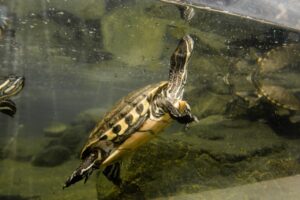
For simplicity let’s say that a tort needs a ratio of 2protein – 4calcium to maintain a slow even growth. Now let’s say we increase the protein intake with dog food. Let’s assume that dog food is 12protein – 8calcium, this gets the turtle to maturity 6 times faster, but with deformities. Is it conceivable that if the tort was able to metabolize the 12 protein and 24calcium it would grow normally but 6 times faster? So increasing the amount and duration of UVB should raise the metabolization of calcium, making said turtle grow faster, without deformity.
***Please note – this ratio is a theoretical argument and in no way should be considered a good ratio for tortoises, please review your species care requirements.
I believe that any studies into this would be cruel, so I guess we’ll never really know, but I think that the overabundance of UVB light helps turtles grow faster.
This talk of animals acquiring vitamins and minerals through diet is good. But UV light gets to the surface in even heavily forested places and it even gets through clouds. So I believe that box turtles are still getting some/enough UV to metabolize their needs. While raising your baby, I bet he will grow a lot faster than his wild counterparts for 2 reasons, abundance of food and abundance of UV light. Even with shade in a turtle pen, it’ll get more direct light than in the woods…
Also on anapsid.org in one of the articles they did some tests with lizard basking spots. cold bright place vs. warm dark place and the lizards always chose the bright place, somewhat proving that the reptiles instinctively knew how to regulate their UV exposure.

